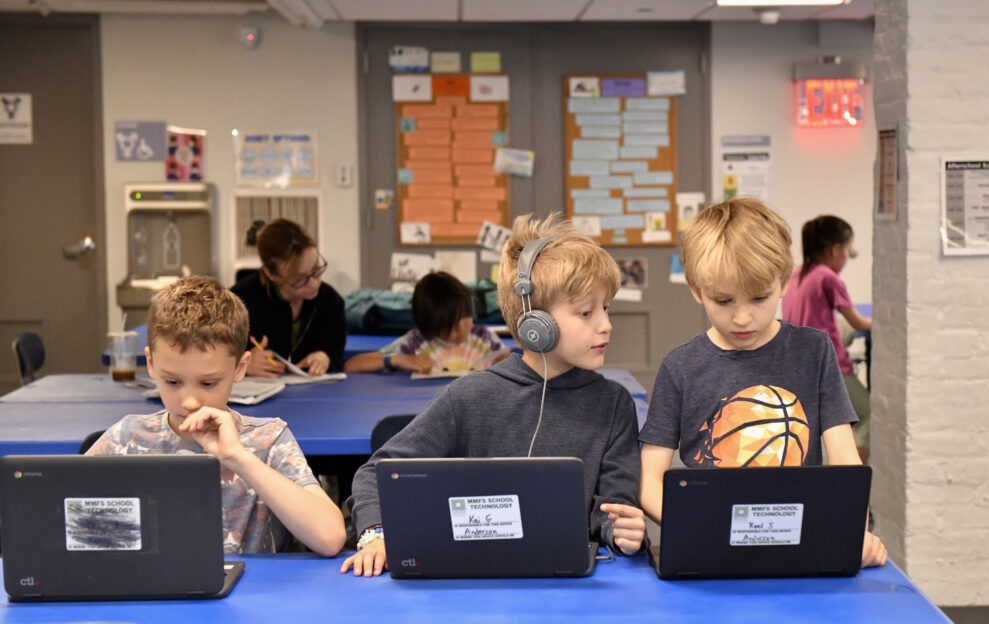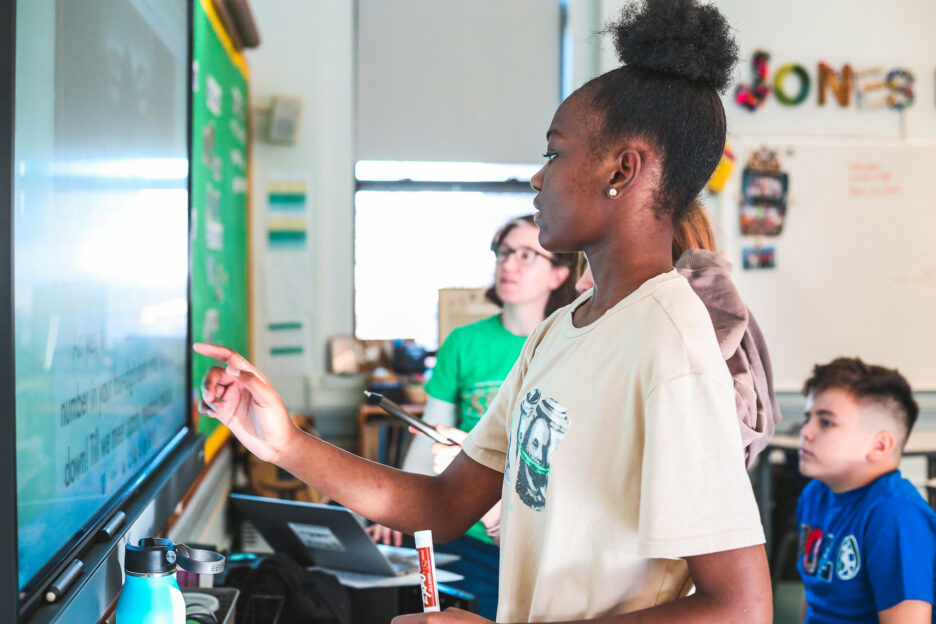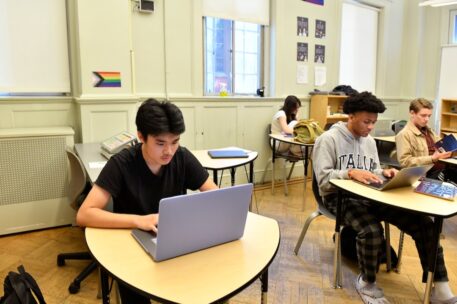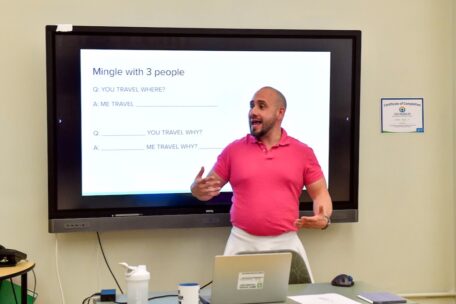Academic Technology and Assistive Technology
Using technology to assist, support, and enhance our curriculum and student life
Technology, particularly assistive technology, plays a great role in assisting our students in unlocking their potentials. The goal of our educational technology integrators and coordinators is to help facilitate mastery in any tool that can help a teacher teach or a student learn.
Some students require assistive technology, while others simply benefit from current technologies to support their learning experiences in the classroom. Extensive work goes into helping each of our students develop as digital citizens.
Technology that progresses with our students’ needs
Technology at MMFS serves to enhance our students’ learning as they progress through our program. It also offers them opportunities to demonstrate their knowledge and brilliance in ways their disabilities might otherwise prevent them from doing.
In the lower school, students learn about the appropriate use of computers in a highly structured and supervised environment. The middle school brings broader horizons, which means more room for learning and mistakes, as well as more needs for technology to play a substantive role in research and classwork. By upper school, students are using technology throughout the day in every class in a model that mixes 1:1 (school-provided devices for each student) and BYOD (bring your own device).
MMFS students graduate with a clear understanding of how technology can better support their learning needs. They take their next steps with the command of a variety of tools and platforms which will help them succeed in college and life beyond the K–12 classroom.
Assistive and supporting technology platforms at MMFS
MMFS uses the following platforms (and many others) heavily throughout the curriculum across all grades:
- G Suite for Education
- Brainpop
- IXL
- Newslea
- Read & Write for Google
- Learning Ally
- Sumdog

Assistive and supportive technology by division
Lower School
The focus of technology in the lower school is on assisting students in the learning process and supporting teachers in the classroom.
Each classroom in the lower school is equipped with an interactive whiteboard, and a teacher amplification system. Teachers employ a wide variety of curriculum enrichment websites, such as IXL and Brainpop, for work both in and out of the classroom. Mobile laptop carts enable students to access technology when they need it. Fine/gross motor sensory therapists are on hand to teach typing and computing skills.
An Educational Technology Coordinator develops technology strategies, applications, and supports for teachers and students. We continue to develop our specialized assistive technology programs with a particular focus on Chromebook and tablet programs.

Middle School
Technology education goals in the middle school are an understanding of the foundations of digital citizenship in a global society and the appropriate use of technology as a resource to aid in learning and research.
By assisting students in mastering increasingly complex subject matter and expanding their interests and knowledge with rich media, interactive lessons, and collaborative projects, the program is designed to prepare students as citizens in an increasingly technology-driven society. This is accomplished through two simultaneous pathways: (1) media literacy being taught in the classroom, which enhances the students’ understanding of the Internet, and (2) appropriate use, which is the foundation of the digital citizen, being taught with the help of the technology integrator.
Significant cross-curricular tools are used to enhance learning through the application of technology. Each classroom in the middle school is equipped with an interactive multitouch screen and a teacher amplification system. Teachers employ curriculum enrichment websites such as IXL and Newslea for work both in and out of the classroom. Students have access to Chromebooks and other technology in all subject areas.
The middle school educational technology integrator teaches students the foundations of competency in Google Apps and how to use the Internet safely and responsibly. Additional focus on assistive technology and support tools are provided to students who work one-on-one with the integrator.
Upper School
The focus of technology in the upper school is assisting students in their learning and further developing digital citizenship.
Students have access to a full media lab, are each given a Chromebook, and are free to bring in any personal devices they need to facilitate learning. All coursework is available through Google Classroom, and all homework assignments are submitted using the system. Through online publication, social digital interaction, and an “open screen” policy in the upper school building, students learn the importance of responsible, appropriate, and quality online communications.
Each classroom in the upper school is equipped with an interactive digital screen and a teacher amplification system. Upper school teachers employ curriculum enrichment websites including IXL, Newslea, Edpuzzle, and Flipgrid, as well as extensive use of digital video for classwork and homework.
Students are encouraged to explore technology solutions that will continue to provide support after they graduate, and are assisted in working with those technologies. There are two Educational Technology Integrators in the upper school — one for ninth and tenth grade, and one for eleventh- and twelfth-grade students and faculty.

